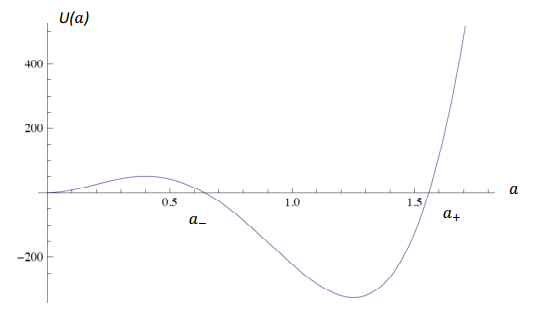Mathematics of Eternity Prove The Universe Must Have Had A Beginning
The Big Bang has become part of popular culture since the phrase was coined by the maverick physicist Fred Hoyle in the 1940s. That’s hardly surprising for an event that represents the ultimate birth of everything.

However, Hoyle much preferred a different model of the cosmos: a steady state universe with no beginning or end, that stretches infinitely into the past and the future. That idea never really took off.
In recent years, however, cosmologists have begun to study a number of new ideas that have similar properties. Curiously, these ideas are not necessarily at odds with the notion of a Big Bang.
For instance, one idea is that the universe is cyclical with big bangs followed by big crunches followed by big bangs in an infinite cycle.
Another is the notion of eternal inflation in which different parts of the universe expand and contract at different rates. These regions can be thought of as different universes in a giant multiverse.
So although we seem to live in an inflating cosmos, other universes may be very different. And while our universe may look as if it has a beginning, the multiverse need not have a beginning.
Then there is the idea of an emergent universe which exists as a kind of seed for eternity and then suddenly expands.
So these modern cosmologies suggest that the observational evidence of an expanding universe is consistent with a cosmos with no beginning or end. That may be set to change.
Today, Audrey Mithani and Alexander Vilenkin at Tufts University in Massachusetts say that these models are mathematically incompatible with an eternal past. Indeed, their analysis suggests that these three models of the universe must have had a beginning too.
Their argument focuses on the mathematical properties of eternity–a universe with no beginning and no end. Such a universe must contain trajectories that stretch infinitely into the past.
However, Mithani and Vilenkin point to a proof dating from 2003 that these kind of past trajectories cannot be infinite if they are part of a universe that expands in a specific way.
They go on to show that cyclical universes and universes of eternal inflation both expand in this way. So they cannot be eternal in the past and must therefore have had a beginning. “Although inflation may be eternal in the future, it cannot be extended indefinitely to the past,” they say.
They treat the emergent model of the universe differently, showing that although it may seem stable from a classical point of view, it is unstable from a quantum mechanical point of view. “A simple emergent universe model…cannot escape quantum collapse,” they say.
The conclusion is inescapable. “None of these scenarios can actually be past-eternal,” say Mithani and Vilenkin.
Since the observational evidence is that our universe is expanding, then it must also have been born in the past. A profound conclusion (albeit the same one that lead to the idea of the big bang in the first place).
Ref: arxiv.org/abs/1204.4658: Did The Universe Have A Beginning?
Deep Dive
Policy
Is there anything more fascinating than a hidden world?
Some hidden worlds--whether in space, deep in the ocean, or in the form of waves or microbes--remain stubbornly unseen. Here's how technology is being used to reveal them.
A brief, weird history of brainwashing
L. Ron Hubbard, Operation Midnight Climax, and stochastic terrorism—the race for mind control changed America forever.
What Luddites can teach us about resisting an automated future
Opposing technology isn’t antithetical to progress.
Africa’s push to regulate AI starts now
AI is expanding across the continent and new policies are taking shape. But poor digital infrastructure and regulatory bottlenecks could slow adoption.
Stay connected
Get the latest updates from
MIT Technology Review
Discover special offers, top stories, upcoming events, and more.